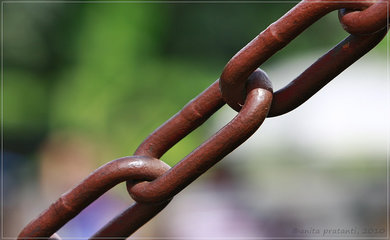I want to love Orange is the New Black. I really, really do. Based on the memoir of the same name by Piper Kerman, the Netflix original series exploded onto computers across the US this July and quickly gained legions of loyal fans, including some respected critics who raved about it. Mentions of the show, mostly positive, are rampant on my Twitter feed, and many progressive pop culture critics and outlets are covering the series in glowing terms.
Netflix is definitely demonstrating for viewers that it can pump out cutting-edge original programming with talented casts and strong production values. On its surface, Orange has a lot going for it, including a multiracial past, a dynamite production team (the lead producer, Jenji Kohan, was responsible for Showtime’s critically-acclaimed Weeds), and a diverse representation of queer and trans characters. Here’s where things start to fall apart, though.
The setting of the show is a minimum-security women’s prison, where our heroine has been sent after being fingered for carrying drug money for her lover a decade ago. She’s wrenched from her comfortable and solid middle-class life with her fiance to prison and forced to rapidly adapt in a setting that is supposed to walk a fine line between drama and comedy; like Weeds, Orange plays with a framing that tries to make viewers relate to the main character as a sort of ‘everywoman.’
Yet, Piper Chapman (Taylor Schilling) is a white, middle class woman, not an everywoman in a prison system populated primarily by women of colour. Does the show get high marks for its depiction of complex sexualities? Yes, it does, and extra high marks for having a transgender inmate who’s actually played by a trans actress; that makes Orange stand out from other programmes, where trans women are usually played by cis women or cis men in dresses, creating a mockery of the trans experience. Does Orange probe into the complexities of prison life for queer and trans inmates, as for example when Sophia (Laverne Cox) is denied estrogen and tries desperately to obtain some from her wife? Yes.
But the show’s depiction of race leaves much to be desired, as Yasmin Nair notes at In These Times. In many senses, the show is, as she puts it, ‘white chick behind bars,’ and it leaves a bitter, unpleasant taste in my mouth. This is a show that positions prison as a fundamentally redeeming place that can even be fun for inmates, and that isn’t the reality of the justice system, or the experience of women of colour in prison. When Piper says she’s in prison because she made bad choices, for example, that positions all inmates similarly, when that’s simply not the case: many women of colour are in prison because they are women of colour in a nation where not being white is very often a criminal offense.
The root assumptions behind Orange likely reflect the attitude of the memoir, a sort of Eat, Pray, Love behind bars, all about a white woman’s redemption through her stint in prison. White women enjoy substantial social and judiciary support that simply isn’t available to women of colour, and they occupy a position of privilege in prison that isn’t explored in any depth here; no one dares to admit, for example, that this isn’t even a story we’d be talking about if it didn’t involve a white woman as the heroine. Women of colour in prison aren’t the stuff of which pop culture hits are made.
They’re what we think of as ‘normal’ in the US, and not just ‘normal,’ but also ‘justified.’ White audiences want to believe that the prison system is inherently sound, and that the way justice is managed in the US is reasonable and appropriate. They also want to convince themselves that people who are in prison belong there, and they love redemption narratives involving people who go to prison, find themselves, and emerge as stronger, better people.
That’s not the reality, though, and glossing it over with a peppy show filled with heavily stereotyped women of colour won’t magically fix reality. The elision of class issues in Orange is also a serious problem, given that class plays a key role in who goes to prison and how; the show seems determined to sidestep the substantial structural and institutional problems associated with the justice system to focus on entertaining the audience, at the expense of making an actual critical commentary. It also relies on heavy stereotypes about race and class for cheap laughs, without probing these stereotypes and asking why we cling so firmly to them.
Orange may tackle queer issues with grace, elegance, and superb honesty, but it falls dismally short when it comes to race, class, and their intersections within the prison system. It doesn’t just do so in a way that makes the show leave a bad taste in my mouth; it actively pushes specific narratives about prison that simply aren’t true, setting up a simplistic model of how the justice system works. For viewers who aren’t familiar with critical evaluations of the prison industrial complex, Orange could prove highly damaging, especially when paired with all the progressive acclaim, which creates a false sense that the show is somehow also progressive.
The thrills of delight over the show from the progressive community serve as a stark reminder that prison reform and prisoner rights do not rank high on the concern lists of many progressives and their organisations, and that many progressives continue to cling to the fundamental belief that the justice system is functioning well, that people are in prison because they deserve to be there, and that incarceration is an appropriate way to deal with crime.
I can’t find much to praise there.

